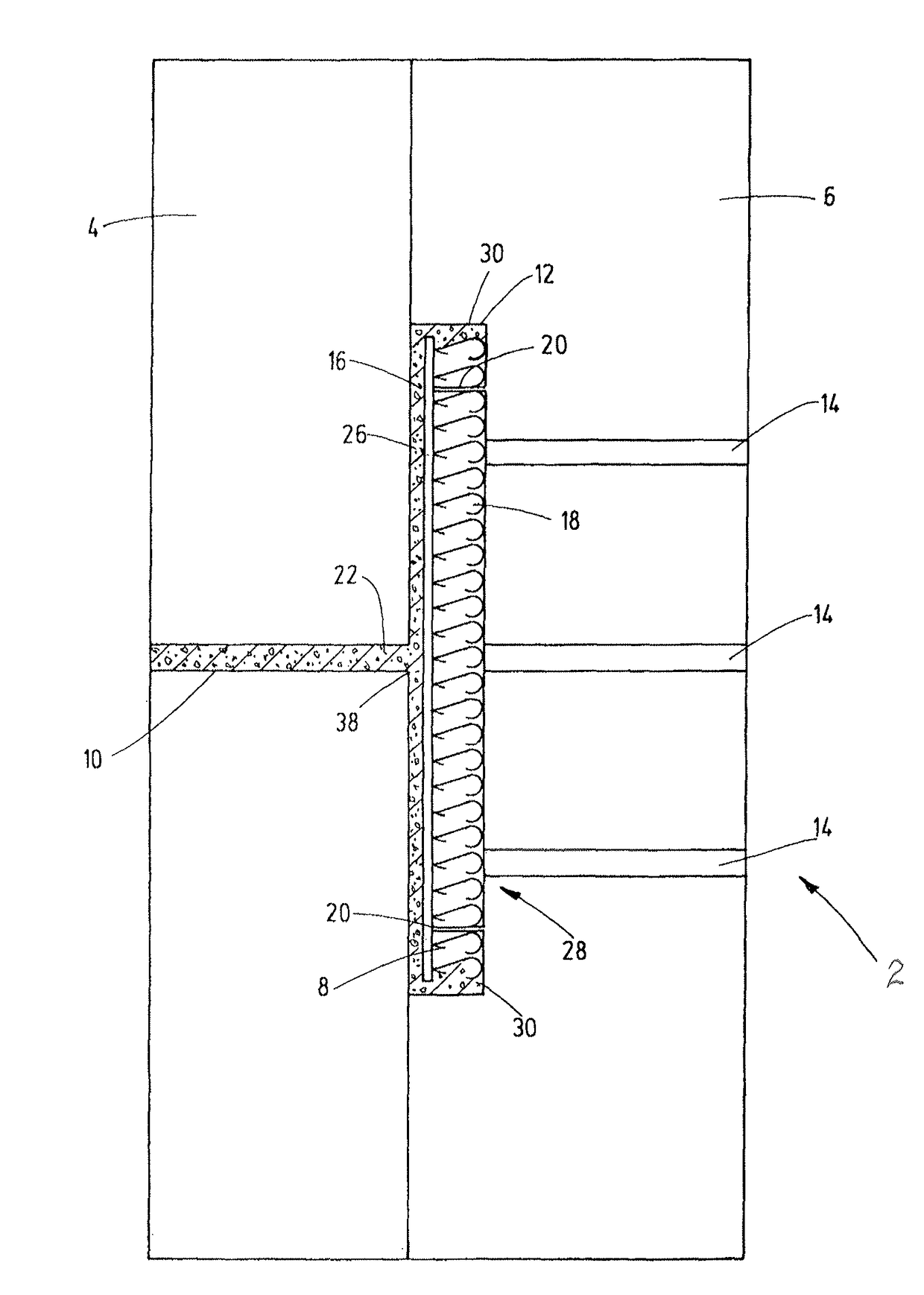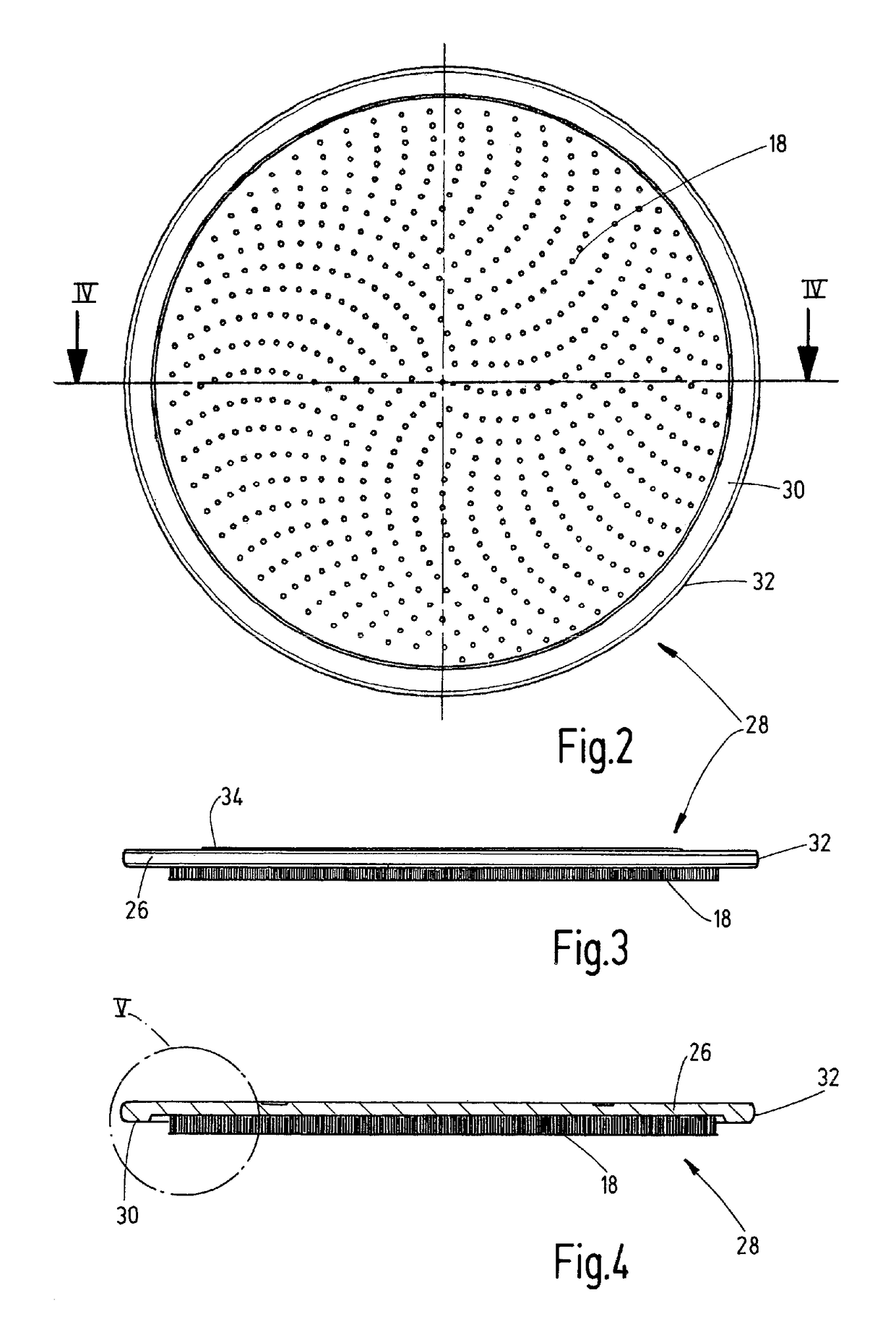Method for producing a connecting part using an injection foam molding process
a technology of injection foam and molding process, which is applied in the direction of mechanical equipment, transportation and packaging, other domestic objects, etc., can solve the problems of insufficient chemical, thermal adhesive bond, risk, and the separation of the fastening part and the supporting part from one another, and achieves low equipment complexity and efficient and reliable production.
- Summary
- Abstract
- Description
- Claims
- Application Information
AI Technical Summary
Benefits of technology
Problems solved by technology
Method used
Image
Examples
Embodiment Construction
[0028]FIG. 1 shows a highly schematically simplified injection mold 2 in the manner of a schematic diagram. The movable mold parts 4 and 6 of the injection mold 2 delimit a mold cavity 8 in a closed position of the mold parts. From among a plurality of hot runners located in the mold part 4 for supplying the casting material, only one runner 10, is visible in FIG. 1. Air channels 14 leading into the cavity 8 are formed in the mold part 6, which is disposed opposite the mold part 4 having the runner 10. A recess 12 is formed in mold part 16 to create the cavity 8. To carry out an injection foam molding process, an insert part 16 is inserted into the recess 12. The insert part 16 forms the fastening part when the connecting part is finished. The fastening part has the adhesive and / or hooking elements. Before inserting the prefabricated insert part 16 into the injection mold 2, the side of the insert part 16 facing away from the hooking elements 18 is provided with a coating. The coati...
PUM
| Property | Measurement | Unit |
|---|---|---|
| pressures | aaaaa | aaaaa |
| adhesive | aaaaa | aaaaa |
| thermal adhesive | aaaaa | aaaaa |
Abstract
Description
Claims
Application Information
 Login to View More
Login to View More - R&D
- Intellectual Property
- Life Sciences
- Materials
- Tech Scout
- Unparalleled Data Quality
- Higher Quality Content
- 60% Fewer Hallucinations
Browse by: Latest US Patents, China's latest patents, Technical Efficacy Thesaurus, Application Domain, Technology Topic, Popular Technical Reports.
© 2025 PatSnap. All rights reserved.Legal|Privacy policy|Modern Slavery Act Transparency Statement|Sitemap|About US| Contact US: help@patsnap.com



